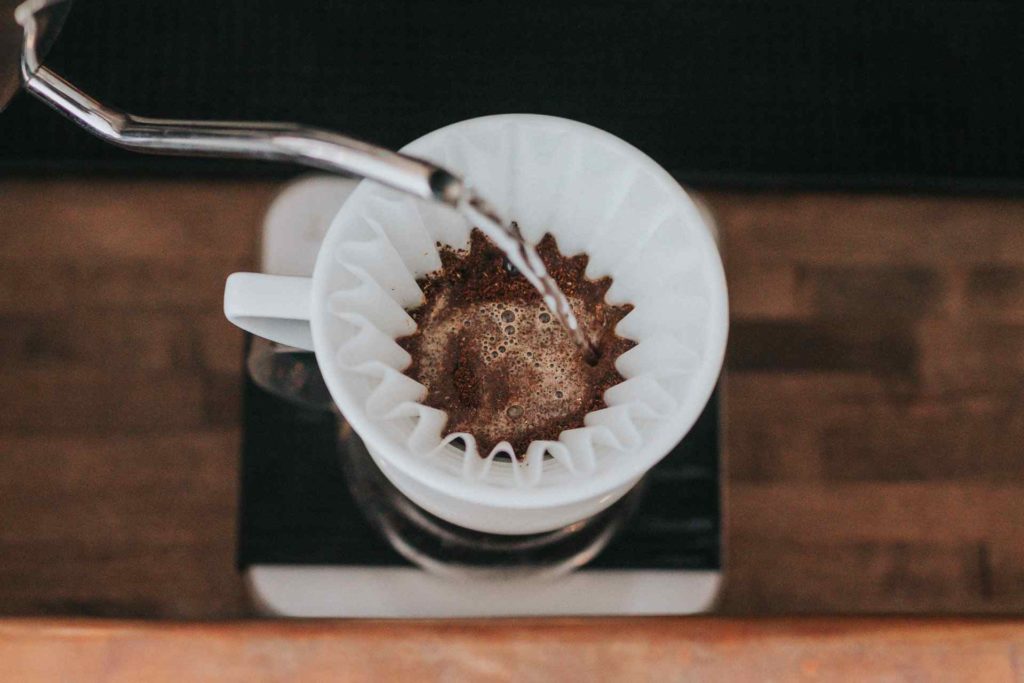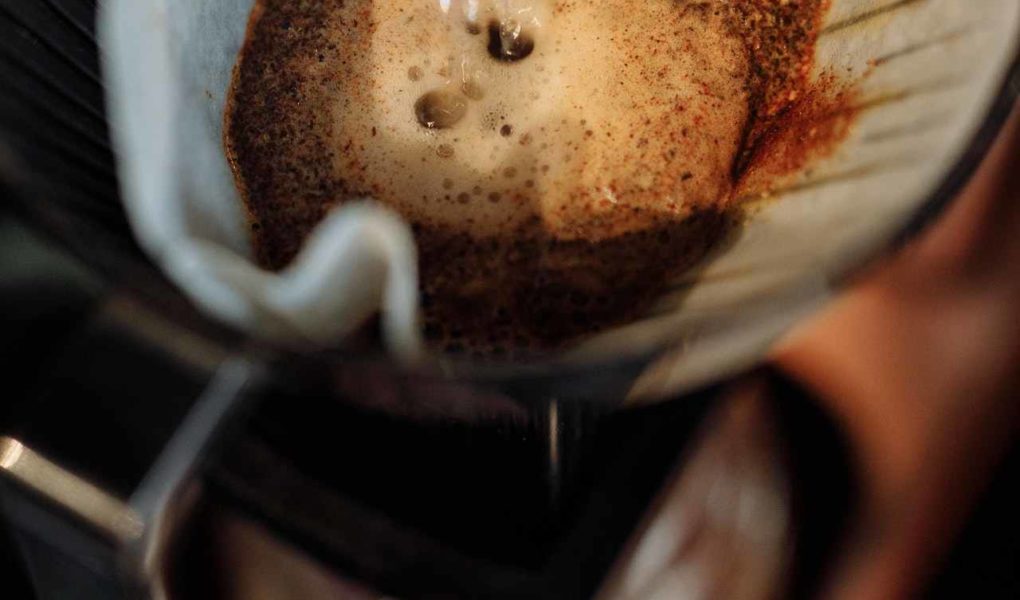If you are a coffee expert, then you will likely already know what a coffee bloom is, but if you are just starting to venture out and experiment with different brewing methods, it might be a new term for you. Understanding what the coffee bloom is, is important as it can severely impact the final result and taste of your coffee when using select methods.
What Is The Coffee Bloom?
The coffee bloom is a process where hot water is poured over the coffee grounds to create a bubbling. The heat causes the coffee beans to swell up and release carbon dioxide (CO2). The coffee bloom simply is the release of gases when hot water is poured over coffee.
The bloom happens when carbon dioxide (CO2) becomes trapped in the coffee beans during the roasting process. You may notice this when making a French Press coffee for example; if you don’t allow the coffee to bloom and pour boiling water straight to the top, you will notice a thick layer of foam – almost like a Guinness.
You will notice it more in coffee brewing devices that are thin and cylindrical, rather than the likes of the Chemex, although, the bloom still occurs no matter what brewing device is used. You will also see a thin layer on freshly brewed espresso, that will actually stay there until stirred.
Why Does a Coffee Bloom Matter?
The coffee bloom is important as it can affect the taste of your coffee and the rate at which the essential coffee oils are extracted from the grounds.
The best way to get a good cup of coffee is to allow the coffee beans to bloom before brewing. This requires you to pour just enough water to dampen the coffee grounds, then wait up to 60 seconds for the bloom to occur, releasing the Co2. Then you continue the pour like normal.
If you pour too much water on the grounds for the blooming procedure, it will filter through to your carafe or end up retaining the C02 and affecting the flavor anyway.
However, the bloom is not the only factor to get right, there are several factors that come into play when making coffee, such as temperature, grind size, brewing time, and the roast, plus many more.
Coffee blooms are often more visible in French press coffees. These brewing methods use coarsely ground beans that have a high surface area for water to interact with. Plus the chamber is narrower, like the Aeropress, so you will see the bloom as it happens.
Factors Affecting the Coffee Bloom

Coffee beans are roasted to produce a flavor and aroma. The way the coffee beans are roasted affects the flavor and quality of the coffee and thus affects your bloom process.
The process of roasting coffee beans is not just about making them dark in color, but also about how much heat is applied to them. Roasting coffee beans at a lower temperature will make them more flavorful than if they were roasted at a higher temperature.
1. The Temperature Beans Are Stored In
When it comes to storing your coffee beans, you need to remember to avoid storing them in high-temperature areas since heat will accelerate the escape of gas from the beans.
2. The Roast
Different types of roast will have different levels of C02, for example, a darker roast will retain more C02 and release it slower than a lighter roast. Likely because it is roasted in the heat for a longer time.
3. The Robustness
The more robust the beans are, the harder it is for the carbon dioxide to escape from the beans.
4. The Heat and Humidity
This will cause the beans to degas at a rapid rate. This is why you may notice that beans purchased from stores that have them open to scoop from, not stored in an airtight container, don’t have a very strong taste.
Potential Coffee Bloom Issues
If you have a coffee bloom problem, it is important to note that it can be solved with some simple changes. The first step is to change your brewing habits. Brewing a perfect cup of coffee is not as simple as it sounds. There are many factors that go into the brewing process and one of the most important ones is the grind size.
For example, if you are using poorly grounded coffee beans. If you use finely grounded coffee beans, then the cup becomes too cloudy. If you use coarsely grounded coffee beans, then you won’t get the best cup of joe since the water won’t be able to properly pass through the beans.
The grind size, particle size distribution, and water temperature are all critical factors that have to be taken into account when brewing coffee.
The second thing to take note of is the coffee bean quality since it affects the quality of the bloom. You know by now the difference between using pre-ground coffee, the coffee you’ve ground days ago, or using fresh coffee beans and grinding just enough for you to use immediately.
If you grind your own beans and leave them out the oxygen reacts with the beans and causes them to go stale more quickly. The key is to keep your beans in an airtight container and grind them just before brewing. But you should also consume them within 2 weeks.
No Bloom – No Coffee
If you don’t get a coffee bloom, or a very small one compared to normal, it is a likely sign that the coffee you are using is stale, old, or poor quality. You can of course continue to brew to save wasting the coffee, but it would be best to start over with a fresh batch here.
The Final Sip
As you can see, the coffee bloom is a vital step in your coffee brewing process. It is not important on its own, but collectively with other factors such as grind size and temperature. To understand the coffee bloom fully, try testing the Chemex out where you can see what happens in an easier way.




